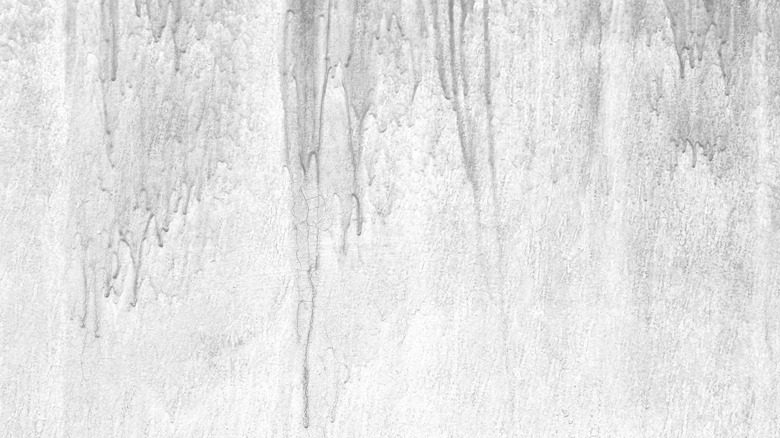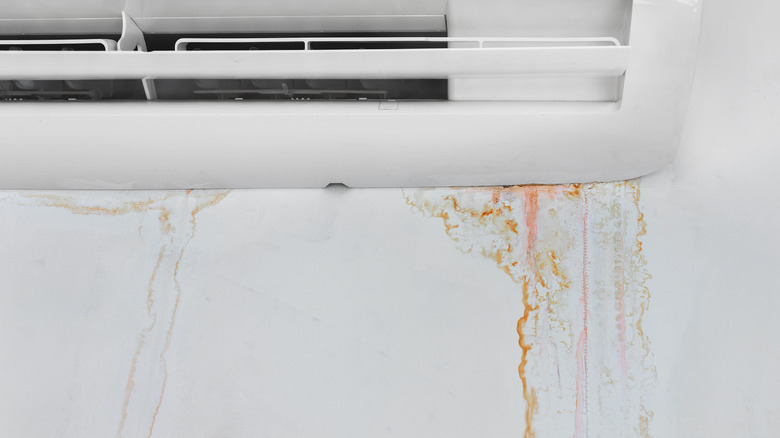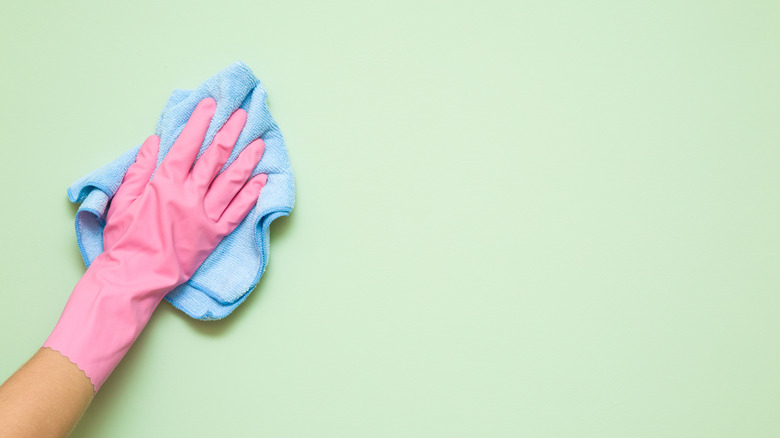The Actual Reason Behind Your Bleeding Walls
Noticing glossy stains or coffee-tinted streaks lining a newly painted wall can be upsetting. You might be confused after checking water and shampoo drips off your list and confirming neither the previous homeowner nor anyone from your household smokes indoors. But before you jump the gun and mull your repainting options, consider your surroundings. Are your walls perhaps exposed to excessively humid or cold conditions? If so, surfactant leaching might be the reason behind your "bleeding" walls.
As bathrooms, kitchens, and laundry rooms remain wet, they might suffer from surfactant leaching. However, it also happens on exterior walls, particularly in areas prone to condensation, like near overhanging eaves. Surface active agents (surfactants) play a diverse role in latex paints. Besides stabilizing the formulation, these wetting agents are used as additives, ensuring the paint shows the right pigment and spreads evenly without being overtly viscous. Unfortunately, if the paint is forced to harden and dry in humid or cold conditions, its surfactants will come to the surface within a few weeks as oily or sticky streaks on the walls, sometimes taking on orange or tan hues.
Why your walls bleed
Painted walls usually don't bleed if they have had sufficient time to cure. In this case, the surfactants have locked into the film or evaporated. But things come to a head when the temperatures drop below 50 degrees Fahrenheit or the walls are exposed to cold drafts and frost, delaying the drying and binding of the paint to the walls. This causes the surfactants to separate from the film and resurface as unsightly, oily drip lines. This issue is particularly acute in darker paints — such as dark greens and browns — as their colorants require higher surfactant concentrations.
High humidity, too, causes bleeding walls, especially if the paint wasn't created to accommodate damp conditions. For instance, a steam bath in a freshly painted bathroom will leave the walls sweaty. Conversely, exterior walls may get rained on or have dew deposits, causing paint discoloration. Most surfactants are water-soluble, so they're attracted to the moisture buildup and begin congregating on the walls as glistening blotches. Poor air circulation also plays spoilsport and is often a concern in small laundry rooms when the dryer works at full blast, turning the air misty.
However, if your walls are streaked in monstrous reds, blame it on algae. They thrive in moist conditions in inadequately ventilated areas. But if you think your exhaust works just fine, closely examine your metal cabinets for rust — they may liquefy due to moisture and seep down as bloodlines.
Fix and prevent paint streaks
Fortunately, surfactant leaching is merely cosmetic and won't severely damage the walls. Wiping the stains down with a soft, water-soaked fabric usually does the trick (avoid painting over them). If the stains are too stubborn, sponge the area down with a soapy solution followed by a water rinse. However, this is only a quick fix and will not solve the problem permanently until all surfactants are removed from the paint film. You might even have to remove the film and repaint the wall if the stains are not coming out. For outer walls, lightly drench them in water or leave them as is — the drips will disintegrate on their own in a month.
Get a hold of the high moisture with a dehumidifier. To clear out the vapor, leave the exhaust fan running for a while after you're done with your hot shower. Also, routinely clean out all dust and grime buildup on the fan. To deal with red stripes, remove the source of rust and then wipe the area clean. You'll need a biocide to get rid of the algal growth. Going forward, ensure the paint is the right kind for a given area's temperature and humidity levels. Also, give it seven to 10 days to cure completely before exposing it to hot or cold stressors.


